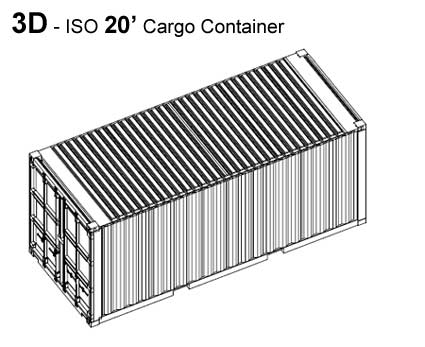Download Shipping Container Iso Sizes
Shipping Container Insulation - Solving Your Condensation, Heat and Cold Problems Insulation for Metal Shipping Containers must Protect from Condensation, Radiant Heat and Cold. Prodex Total Shipping Container Insulation = + + All in One Product. One solution to Cold, Heat and Condensation - Your container will be warm in winter, cool in summer and dry all the time. Hybrid Solar Wind Power Generation System Pdf.


Movavi Screen Capture Activation Keygen Mac Crack. 13/64 inch (approx. 3/16') - 5mm closed cell polyethylene foam covered on both sides with.0012 inch (0.03mm) aluminum foil facing. Condensation - It can seem like a tropical rain forest inside an unprotected container. It's worse on those days where there is a greater contrast between temperatures at night vs. The morning sun hitting the cool metal sheeting will create a drip. When warm air comes in contact with the cool metal sheet, condensation occurs. A temperature difference between the outside and inside of your container creates condensation - Similar to what happens when you have a cold can of beer outside on a hot day.
Radiant Heat - Mid-summer sun rays hitting the metal sheeting radiates downward (inside). It can make it unbearably hot and humid inside.
The metal skin magnifies the heat of the summer and frigid temperatures of the winter. Metal is a very good conductor of heat and cold.
In hot weather, metal sheeting rapidly radiate the sun's heat into a container. Cold - Winter temperatures turn metal sheeting cold. The cold sheeting chills the inside of your container making it like an ice box - colder inside the building than out. Insulation In Shipping Containers That Lose R-value Due to Moisture Once fiberglass insulation gets wet (and it will get wet, due to condensation) it will lose R-value! Water trapped between fiberglass insulation and the exterior of a container will also cause mold, fungus growth, rust and oxidation - Conditions that will degrade the metal and shorten the service of the structure. In addition, fiberglass insulation does not prevent radiant heat transfer (the primary source of heat-flow in and outside your container).
Take a look at the white vinyl facing if you can find it in a cargo container - It will be either sagging, or sagging and flaking. This is due to the added weight of water. Behind the white vinyl is a wet, mold filled blanket that will eventually cause the white vinyl to crack and fall off. At some point, when you're exposed to the toxic fibers, you'll be forced to remove the insulation - Hopefully before it does too much damage to the container. If you insist on using fiberglass, use it in conjunction with Prodex Total, so the Prodex can keep the moisture out of the fiberglass. Once metal sheeting gets cold it creates a situation where it's colder inside the building than out.



